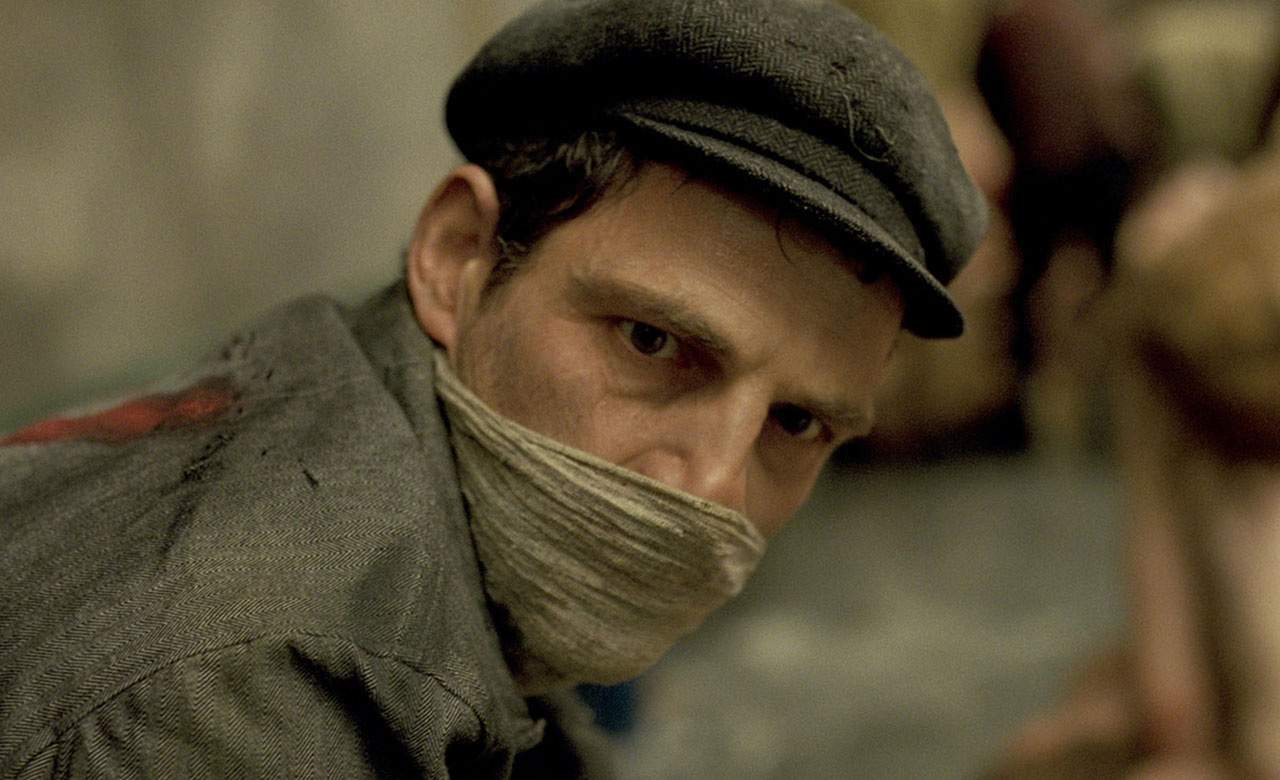Son of Saul
A haunting look at life in Auschwitz.
Overview
Films about the holocaust will never be considered easy viewing. Revisiting one of the darkest chapters of human history is a confronting experience, as is facing the specific details of the atrocious deeds committed. Some movies try to temper their bleakness by honing in on unlikely heroism, like Schindler's List, or the comedy of tragedy, like Life is Beautiful, or offering a child’s view of events, like The Boy in the Striped Pyjamas. Hungarian filmmaker László Nemes does none of this. Son of Saul doesn’t just contemplate challenging material — it is designed to immerse viewers in the horrific ordeal that was life in a concentration camp.
While charting the daily misery of Jewish prisoners might sound familiar, it's the inner workings of the Sonderkommando that are thrust into the spotlight here. Those unacquainted with the term may be startled to discover its meaning, referring to a unit of detainees that assisted the Nazis with the very worst aspects of their final solution. Sonderkommando workers escorted their fellow inmates into the gas chamber, then cleaned up the aftermath. Their compliance was coerced, unsurprisingly; by hastening the deaths of others, they avoided their own for a few months.
In a film fictional in its specifics but inspired by actual testimonies in the book The Scrolls of Auschwitz, Saul Ausländer (Géza Röhrig) is one of many men caught in this unfortunate situation — but when he tries to help a boy that crosses his path, he stands out from the rest of the group. Over the course of a turbulent 24 hours in 1944, he attempts to find a rabbi to give the child a proper burial. As he's searching, endeavouring to evade the camp's guards in the process, other members of the Sonderkommando plot their own larger acts of rebellion.
Though there's no doubting the powerful nature of this story, Nemes' stylistic choices prove just as potent as the predicament he explores. It is impossible not to notice the feature's boxed-in aesthetics and constrained atmosphere, nor its concerted efforts to ensure the audience feels as trapped and claustrophobic as the on-screen characters. The filmmaker shoots in the Academy aspect ratio of 1.375:1, and keeps the camera as close as possible to his protagonist. The parallels he's trying to cultivate might be obvious, but that doesn't lessen their intensity. For viewers and Saul alike, there is simply no escape.
Nemes isn't the feature's only standout, however — and while the writer-director is forceful in his approach, his leading man offers an understated counterpart. In his first film role, and in a performance conveyed through mannerisms more than dialogue, Röhrig makes Saul's struggle seethe beyond its historical context. Striving to aid another, even in difficult circumstances; putting someone else's needs before our own; choosing empathy, not just endurance. Ultimately, aren't these the things that make us human?





